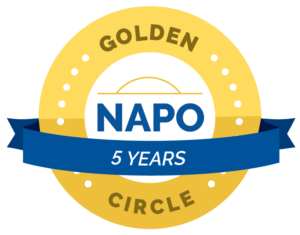Communication is tricky. It’s how we transfer information, but it is fraught with opportunity for error.
Common errors:
- Communication that never happened.
- Communication style disconnect.
- Communication that comes at the wrong time.
- Communication where there is a disconnect between what is being said and non-verbal cues.
- Communication where participants are listening to respond vs listening to learn.
Communication that never happened:
I have been so frustrated with situations where I was ABSOLUTELY CERTAIN that I’d communicated incredibly important details but could not find any substantiating data that I either sent a letter, e-mail or text and can’t find anything that would indicate I’d had a phone or in-person conversation. Dang!
What happened?
Because my brain already “had” the conversation, I assumed the physical part of the conversation had also happened and checked it off my list.
How do we recover?
Offer appropriate apologies if the lack of communication caused harm, then build in strategies to protect from fly-bys in the future.
Communication style disconnect:
I’ll admit, I’m a bit old school when it comes to methods of communication. I prefer in-person communication to the phone, I prefer the phone to e-mail, I prefer e-mail to text, and I prefer text to sticky notes left in my office. But, that’s just me.
For example, I prefer e-mail to confirm client appointments. I have clients that never check their e-mail. Disconnect. I have a client that likes to text her mother, but her mother prefers a phone call. Disconnect. I’ve had employees that prefer to text than talk on the phone. Disconnect. Some people assume all phone numbers have texting capability when they actually don’t. Disconnect.
What happened?
Either the intended message never made it through or the recipient didn’t receive it in a timely manner. Either way, the lack of communication follow-through can cause significant frustration.
How do we recover?
If we text or e-mail and they don’t answer in a timely manner, pick up the phone. Better yet, decide on the preferred and approved method of communication in advance.
Communication that comes at the wrong time.
Sometimes we are in such a hurry to brain-dump information that we don’t pay attention to whether it’s a good time for the recipient to receive it. On more than one occasion I’ve been tempted to mention something that is non-urgent to my husband as he is walking out the door in the morning, somehow expecting him to retain that information in addition to everything else he needs to do to get out the door. Good information; bad timing.
What happened?
Our brains can’t multi-task, they just can’t (they can switch-task, but not multi-task). Because we are spending energy mentally processing what we need to do to get out the door, our brains may not allocate sufficient energy to appropriately process the new information.
How do we recover?
From the receiver’s perspective, realize we aren’t fully focused on the incoming information and stop and listen. From the sender’s perspective, realize that the receiver is distracted with another task and either choose a different time to have the conversation or, if the timing is critical, make a request that they give you more of their attention.
Communication where there is a disconnect between what is being said and non-verbal cues.
We’ve all been there. We hear one thing, but the body language we are seeing doesn’t match the words. “Sure, I’d be happy to help,” but what we see is crossed arms and no eye-contact. “Of course I LOVE the sweater you made, I’ll wear it all the time!” all the while seeing a forced smile.
What happened?
The recipient may be uncomfortable giving an answer they feel might be unwelcome.
How do we recover?
From the sender’s perspective, be open and honest. Committing to an action or event you have no intent on following through on is disrespectful and dishonest. From the receiver’s perspective, if you feel there is a disconnect, call it out. Better to receive unwelcome news now than later.
Communication where participants are listening to respond vs listening to learn.
How many times have we been intently “listening” to a conversation, but what we’ve really done is stopped listening and are just waiting for an opportunity to put our two cents in?
What happened?
We stopped taking in content and became more focused on responding, not listening. We basically shut down half of the communication partnership.
How do we recover?
When we notice we’ve stopped listening, we need to bring ourselves back to the moment and listen intently to see what we may have missed. Be open to asking questions like “I may have missed something there, can you repeat that, please?” Asking for clarification is better than letting the sender assume their message made it through clearly.
Communication fly-bys. Which of these scenarios have you found yourselves in? What harm was caused? What can you do to prevent these fly-bys in the future?
Cindy Jobs, COC, ACC
Looking for more information?
Click here for 15-minute organizing tips.
Click here to schedule a complimentary breakthrough session.

National Association of Productivity & Organizing Professionals, Seattle Chapter Vice-President
International Coach Federation
Institute for Challenging Disorganization
Level I Certificates earned in Chronic Disorganization; ADD; Client Administration; Time Management; Mental Health; and Hoarding.
Level II Specialist Certificates earned in Chronic Disorganization and ADD







